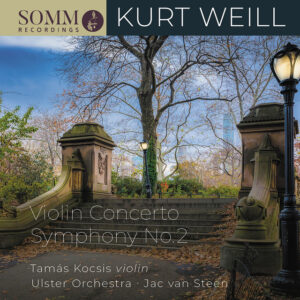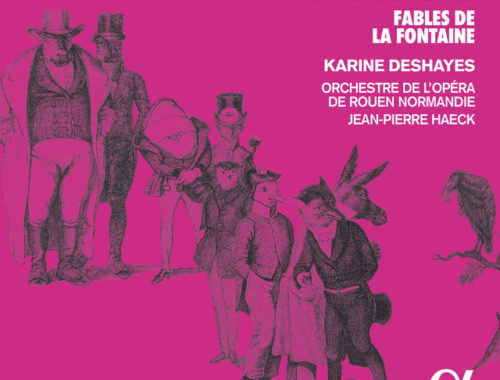GRAMOPHONE Review: Weill Violin Concerto / Symphony No. 2 – Tamás Kocsis, Ulster Orchestra/Van Steen
 No one ever needs to convince me of Kurt Weill’s importance in the great scheme of music. Not just in the world of musical theatre where I have long been an advocate of his American work – not least because the assimilation was so extraordinary – but in the dramatically shifting landscape of European music between the wars. His Concerto for Violin, Wind Instruments, Percussion and Bass is a startling case in point.
No one ever needs to convince me of Kurt Weill’s importance in the great scheme of music. Not just in the world of musical theatre where I have long been an advocate of his American work – not least because the assimilation was so extraordinary – but in the dramatically shifting landscape of European music between the wars. His Concerto for Violin, Wind Instruments, Percussion and Bass is a startling case in point.
There is nothing – nothing – like this piece in the repertoire of that period (1924) and beyond. You may hear allusions to Stravinsky, not just in the choice of wind band but in the brittle streety sound of The Soldier’s Tale, but that’s where influences begin and end. Yes, the aestheticism of Hindemith is self-evident, but it isn’t shot through with the same degree of well-upholstered grandness and the tone of the piece remains resolutely monochromatic, an amazing confluence of the high-minded and the base.
The threnody of clarinets which opens the piece is about as inauspicious as it gets in a 20th century concerto, but the sound world is so drily austere as to be intriguing. A trio of woodwinds later allude to the Dies irae so the mood is hardly upbeat. Then again, the Concerto form part signifies a degree of confrontation and tension between soloist and orchestra and in that regard, you might see the piece a challenging musical debate. In the central Notturno the soloist (excellent Tamás Kocsis) is pitted against a xylophone, an instrument so glaringly inappropriate (even coarse) as to suggest a gatecrasher hell bent on taking over the solo spot. In the Cadenza of this tripartite movement, he obligatory solo trumpet (so beloved of Weill’s Berliner sound) edges its way into the soloist’s vehement discourse. This is grittily ‘modernistic’ music – not the easiest of listens – but the nature of the tunes is still eminently Weillian.
The Second Symphony – whilst unmistakably the work of the same composer – is more mainstream and characterised by a motoric urgency that might be seen as an all-pervasive metaphor for Weill’s flight from Nazi Germany. The solo trumpet is again evocative of the kind of street song that he will have left behind in his associations with Bertolt Brecht and there’s a breezy flute melody which might come straight from The Threepenny Opera. And what of the trombone oration in the central Largo – it might be a funeral march, or it might be a sad procession of the dispossessed. Austerity and wistfulness rub shoulders with resilience and resolve.
This spirited account from the Ulster Orchestra under Jack van Steen comes hard on the heels of an outstanding disc from the dynamic new conductor of the Rotterdam Philharmonic – the Israeli Lehav Shani – and there’s no question that his account of the Second Symphony has a more defined musculature about it. But his coupling is a terrifically engaging account of the Shostakovich Fifth Symphony and I imagine that the appeal here will be of an uncompromising all-Weill pairing
You May Also Like

GRAMOPHONE Review: Offenbach Six Fables de La Fontaine – Karine Deshayes, Orchestre de l’Opéra de Rouen Normandie/Haeck
29/01/2020
GRAMOPHONE: From Where I Sit – July 2018
17/07/2018

